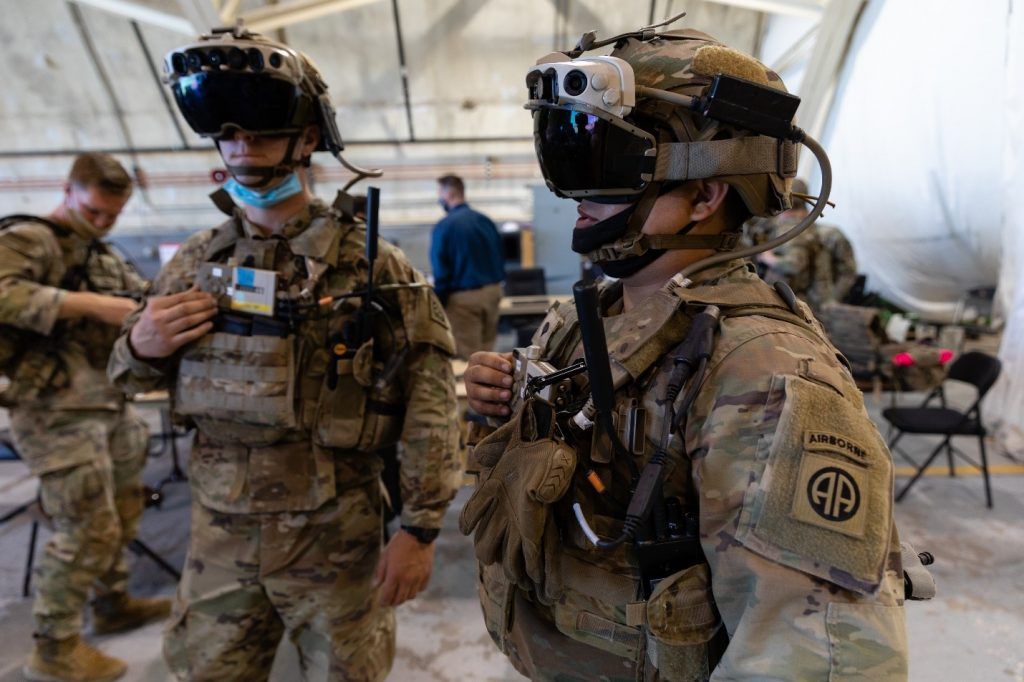Microsoft worked with the Army for 2 years to develop a tactical augmented reality headset
Microsoft worked extensively with the U.S. Army to refine the design of augmented reality headsets for soldiers.

What you need to know
- Army soldiers shared almost 80,000 hours worth of feedback with Microsoft to help design an augmented reality headset.
- Microsoft engineers went to several boot camps to learn how soldiers would need the headset in the field.
- Microsoft shares details about how the headset was developed in a recent news post.
Earlier this year, Microsoft won a massive contract to produce an augmented reality goggle that is integrated onto a Soldier's current helmet for the U.S. Army. A news post from Microsoft shares a behind-the-scenes look at the development process of the headset, which is based on HoloLens. It includes an Integrated Visual Augmentation System (IVAS) that allows soldiers to see through smoke and around corners. Soldiers have tested prototypes of the IVAS for two years, and Microsoft and the Army worked closely together to refine the design.
The Army and Microsoft collaborated extensively to develop the headset. Soldiers went to Microsoft's industrial design and software labs in Redmond to test prototypes and share feedback. As of February 2021, Microsoft had collected almost 80,000 hours of soldier feedback.
Working directly with soldiers allowed Microsoft to discover issues, such as the headset preventing a rifle from being braced against someone's cheek. The headset's goggles were redesigned based on feedback, and Microsoft realized that they couldn't use a dial on soldiers' chests to control the headset because it would get bumped while people crawl on the ground.
In addition to working with the Army to receive feedback, Microsoft engineers went to a military base in North Carolina for a series of weeklong mini boot camps. The goal of the camps was to help the engineers understand the environments that soldiers have to operate in.
"Some folks told me it was a pretty eye-opening experience," said Mark Stephens, the Army's deputy program manager for the project.
The Army plans to equip soldiers with the new headsets in September. They will be utilized for training to simulate in-field situations and enhance the capabilities of soldiers.
The IVAS allows soldiers to project a 3-D terrain map on a headset into their field of vision. It can also help soldiers see through smoke and around corners.
Get the Windows Central Newsletter
All the latest news, reviews, and guides for Windows and Xbox diehards.
The IVAS can be paired with a weapon sight, allowing soldiers to see what the sight is pointed at even if their head is facing another direction. For example, a soldier could hold a rifle around a corner and see around it without having to put their body at risk. Soldiers can also communicate through the headsets.
"The capabilities that we have at this point in the program have allowed soldiers to rethink how they do things," says Master Sgt. Marc Krugh, a senior enlisted advisor who worked on the project. "This is going to put a new spin on things and it's going to ultimately mean a more knowledgeable and prepared force."
As advanced and impressive as the technology is, a key benefit is that it can help protect soldiers. "Inevitably, IVAS is going to save lives," says Krugh. "That's our main focus – bringing our men and women in arms back home."

Sean Endicott is a tech journalist at Windows Central, specializing in Windows, Microsoft software, AI, and PCs. He's covered major launches, from Windows 10 and 11 to the rise of AI tools like ChatGPT. Sean's journey began with the Lumia 740, leading to strong ties with app developers. Outside writing, he coaches American football, utilizing Microsoft services to manage his team. He studied broadcast journalism at Nottingham Trent University and is active on X @SeanEndicott_ and Threads @sean_endicott_.